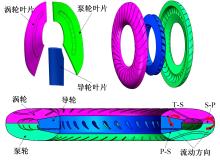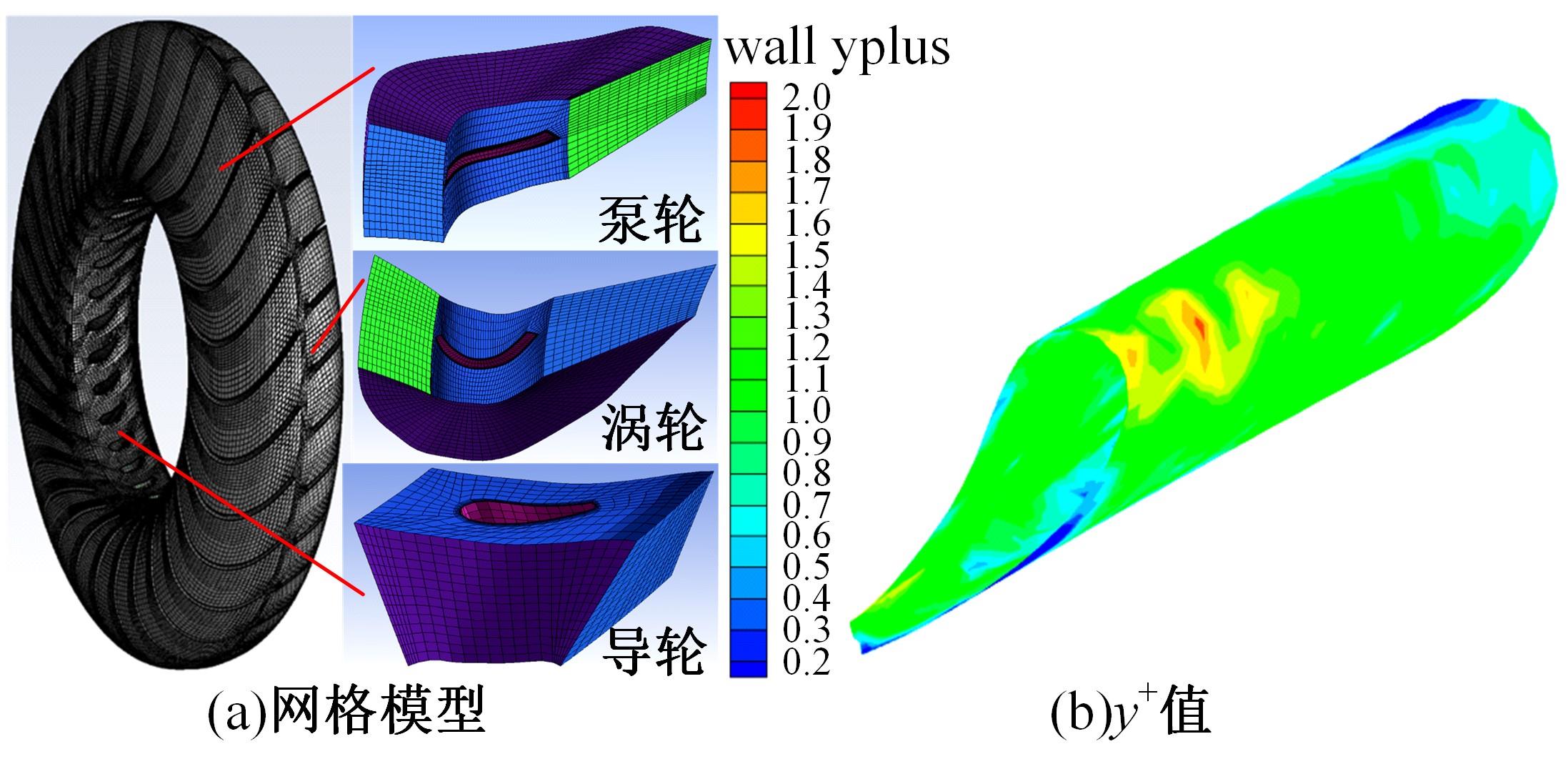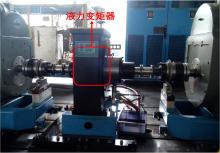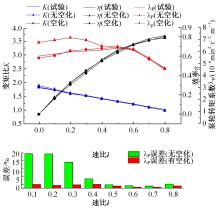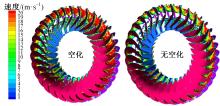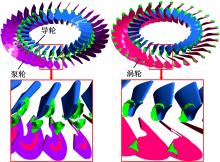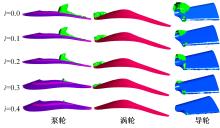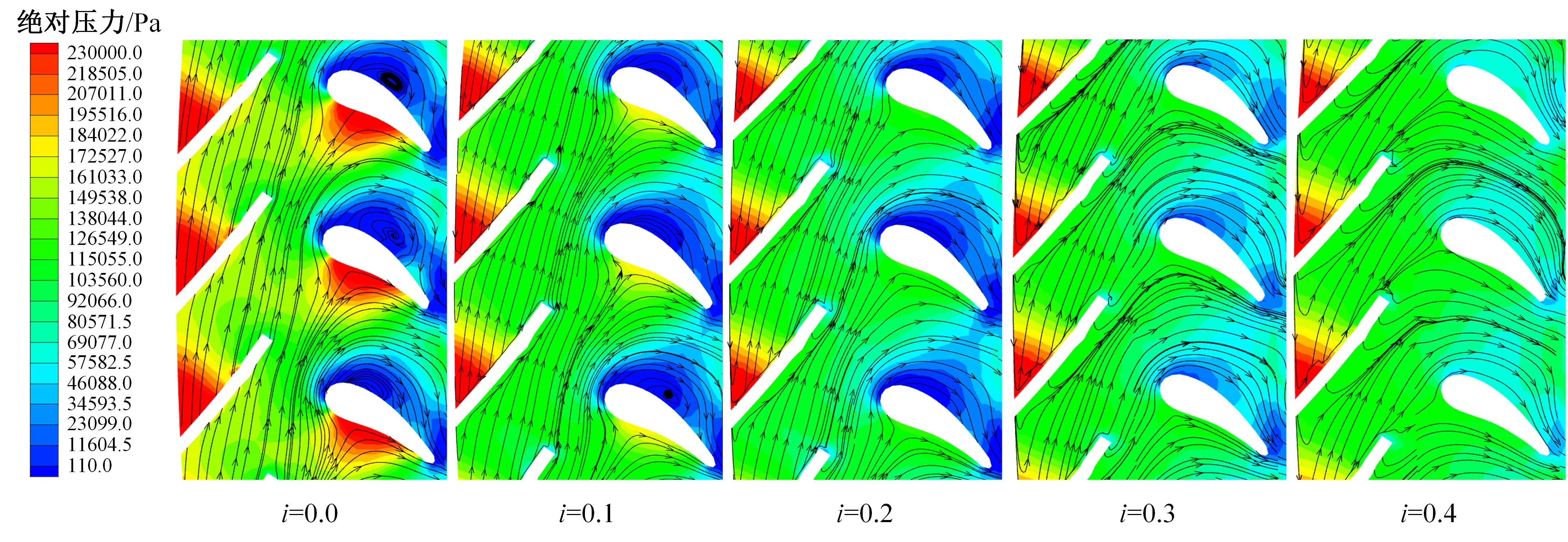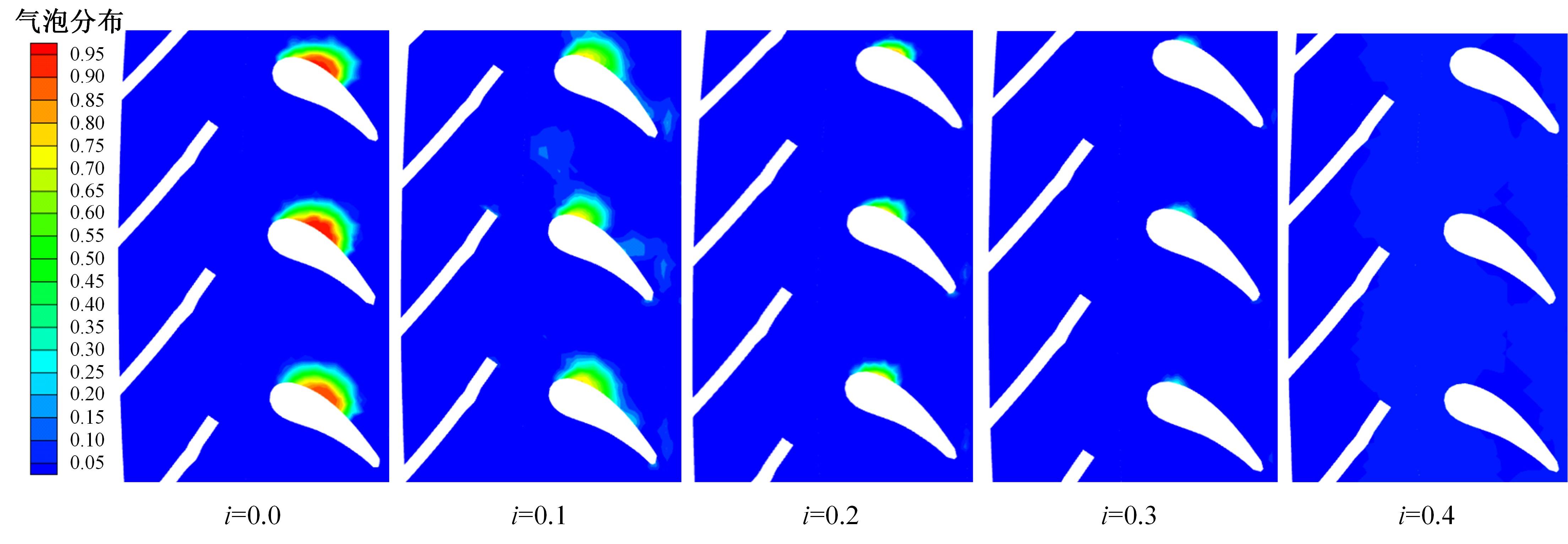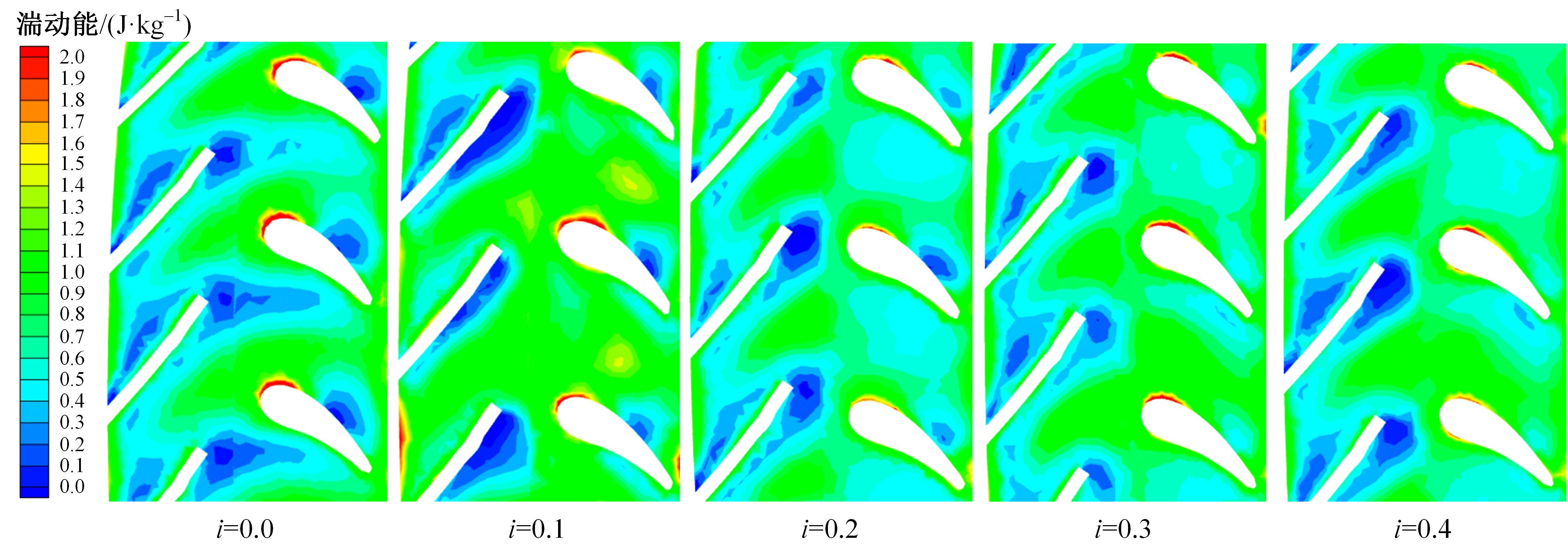Journal of Jilin University(Engineering and Technology Edition) ›› 2023, Vol. 53 ›› Issue (8): 2236-2244.doi: 10.13229/j.cnki.jdxbgxb.20211113
Numerical simulation of cavitation in torque converter and analysis of its influence on performance
Bo-sen CHAI1,2,3( ),Guang-yi WANG1,Dong YAN2,Guo-ren ZHU1(
),Guang-yi WANG1,Dong YAN2,Guo-ren ZHU1( ),Jin ZHANG1,Heng-sheng LYU1
),Jin ZHANG1,Heng-sheng LYU1
- 1.School of Mechanical and Aerospace Engineering,Jilin University,Changchun 130022,China
2.State Key Laboratory of Automobile Simulation and Control,Jilin University,Changchun 130022,China
3.Sinotest Equipment Co. ,Ltd. ,Changchun 130103,China
CLC Number:
- TH137.332
| 1 | 初长祥, 马文星. 工程机械液压与液力传动系统(液力卷)[M]. 北京: 化学工业出版社, 2015. |
| 2 | 刘城,闫清东, 李娟, 等. 高功率密度液力变矩器空化特性研究[J]. 机械工程学报, 2020, 56(24): 147-155. |
| Liu Cheng, Yan Qing-dong, Li Juan, et al. Investigation on the cavitation characteristics of high power-density torque converter[J]. Journal of Mechanical Engineering, 2020, 56(24):147-155. | |
| 3 | Robinette D L, Schweitzer J M, Maddock D G, et al. Predicting the onset of cavitation in automotive torque converters-part I: designs with geometric similitude[J]. International Journal of Rotating Machinery, 2008(9): 803940. |
| 4 | Robinette D L, Schweitzer J M, Maddock D G, et al. Predicting the onset of cavitation in automotive torque converters-part II: a generalized model[J]. International Journal of Rotating Machinery, 2008(9): 312753. |
| 5 | Mekkes J, Anderson C, Narain A. Static pressure measurements and cavitation signatures on the nose of a torque converters stator blades[C]∥Proceedings of 2004 International Symposium on Rotating Machinery, Honolulu, Hawaii, 2004: 49931. |
| 6 | Jaewon J, Jaedeuk J, Minsuk C, et al. Effects of cavitation on performance of automotive torque converter[J]. Advances in Mechanical Engineering, 2016, 8(6):1-9. |
| 7 | Watanabe S, Otani R, Kunimoto S, et al. Vibration characteristics due to cavitation in stator element of automotive torque converter at stall condition[C]∥American Society of Mechanical Engineers, Fluids Engineering Summer Meeting, Rio Grande, Puerto Rico, 2012: 535-541. |
| 8 | Yu D, Korivi V, Attibele P, et al. Torque converter CFD engineering-part Ⅰ: torque ratio and K factor improvement through stator modifications[C]∥SAE 2002 World Congress, Detroit, Michigan, USA, 2002: 14. |
| 9 | Yu D, Korivi V, Attibele P, et al. Torque converter CFD engineering part II: performance improvement through core leakage flow and cavitation control [C]∥SAE 2002 World Congress & Exhibition, Detroit, Michigan, USA, 2002: 1272-1285. |
| 10 | 赵丽丽. 基于CFD的液力变矩器内流场气蚀研究[D]. 太原: 太原科技大学机械工程学院, 2016. |
| Zhao Li-li. The cavitation research of the flow field in the hydraulic torque converter based on CFD[D]. Taiyuan: College of Mechanical Engineering, Taiyuan University of Science and Technology, 2016. | |
| 11 | Liu C, Wei W, Yan Q D, et al. Influence of stator blade geometry on torque converter cavitation[J]. Journal of Fluids Engineering Transactions of the Asme, 2018, 140(4): 041102. |
| 12 | Liu C, Wei W, Yan Q D, et al. Torque converter capacity improvement through cavitation control by design[J]. Journal of Fluids Engineering: Transactions of the ASME, 2017, 139(4): 041103. |
| 13 | Liu C, Wei W, Yan Q D, et al. On the application of passive flow control for cavitation suppression in torque converter stator[J]. International Journal of Numerical Methods for Heat and Fluid Flow, 2019, 29(1): 204-222. |
| 14 | 刘春宝, 李静, 卜卫羊,等. 尺度解析湍流模拟方法在液力传动流动数值模拟中的应用[J]. 液压与汽动,2019, 6: 58-62. |
| Liu Chun-bao, Li Jing, Bu Wei-yang, et al. Application of scale-resolving simulation in hydrodynamic transmission[J]. Chinese Hydraulics & Pneumatics, 2019, 6: 58-62. | |
| 15 | 卢秀泉, 马霖, 马文星, 等. 导轮关键参数对液力变矩偶合器性能的影响[J]. 吉林大学学报: 工学版, 2019, 49(2): 444-450. |
| Lu Xiu-quan, Ma Lin, Ma Wen-xing, et al. Effects of key parameters of stator on the performance of hydrodynamic coupling torque converter[J]. Journal of Jilin University (Engineering and Technology Edition), 2019, 49(2): 444-450. | |
| 16 | 刘树成, 潘鑫, 魏巍, 等. 基于复杂性测度的变矩器流场仿真湍流模型稳健性分析[J]. 吉林大学学报: 工学版, 2013, 43(3): 613-618. |
| Liu Shu-cheng, Pan Xin, Wei Wei, et al. Complexity-based robustness analysis of turbulence model in torque converter flow field simulation[J]. Journal of Jilin University(Engineering and Technology Edition), 2013, 43(3): 613-618. | |
| 17 | Hesse F, Morgans A S. Simulation of wake bimodality behind squareback bluff-bodies using LES[J]. Computers & Fluids, 2021, 223: 104901. |
| 18 | Shur M L, Spalart P R, Strelets M K, et al. A hybrid RANS-LES approach with delayed-DES and wall-modelled LES capabilities[J]. International Journal of Heat & Fluid Flow, 2008, 29(6): 1638-1649. |
| 19 | 张春泽, 刁伟, 尤建锋, 等. 长短叶片水轮机尾水涡带动态特性数值分析[J]. 华中科技大学学报: 自然科学版, 2017, 45(7): 66-73. |
| Zhang Chun-ze, Diao Wei, You Jian-feng, et al. Numerical analysis of dynamic characteristics of the vortex rope in a francis turbine with splitter blades[J]. Journal of Huazhong University of Science and Technology (Natural Science Edition), 2017, 45(7): 66-73. | |
| 20 | Robinette D, Anderson C, Blough J, et al. Characterizing the effect of automotive torque converter design parameters on the onset of cavitation at stall[J]. SAE International Journal of Passenger Cars-Mechanical Systems, 2007, 116(6): 1735-1746. |
| [1] | Guo-hui CHEN,Ye-yin XU,Ying-hou JIAO. Meshing stiffness calculation and vibration analysis of helical gear considering deflection [J]. Journal of Jilin University(Engineering and Technology Edition), 2023, 53(7): 1902-1910. |
| [2] | Gui-sheng CHEN,Guo-yan LUO,Liang-xue LI,Zhen HUANG,Yi LI. Analysis of diesel particulate filter channel flow field and its noise characteristics in plateau environment [J]. Journal of Jilin University(Engineering and Technology Edition), 2023, 53(7): 1892-1901. |
| [3] | Feng WANG,Shuang-rui LIU,Jia-ying WANG,Jia-ling SONG,Jun WANG,Jiu-peng ZHANG,Xiao-ming HUANG. Size and shape effects of wind drag coefficients for porous structures [J]. Journal of Jilin University(Engineering and Technology Edition), 2023, 53(6): 1677-1685. |
| [4] | Sheng LI,Jia ZHU,De-hui HUANG,Cun-fu CHEN,Hong-qing FEI,Wei FENG,Xing-jun HU. Structural parameters optimization of louver fins of air⁃cooled charge air cooler [J]. Journal of Jilin University(Engineering and Technology Edition), 2023, 53(4): 998-1006. |
| [5] | Jian WANG,Wei YU,Bin WANG. Effects of methanol substitution percent on combustion and emission of diesel engines under plateau condition [J]. Journal of Jilin University(Engineering and Technology Edition), 2023, 53(4): 954-963. |
| [6] | Li-juan YU,Yang AN,Jia-long HE,Guo-fa LI,Sheng-xu WANG. Research progress and development trend of extrapolation method in electromechanical equipment load spectrum [J]. Journal of Jilin University(Engineering and Technology Edition), 2023, 53(4): 941-953. |
| [7] | Zhen SONG,Jie LIU. Time series prediction algorithm of vibration frequency of rotating machinery [J]. Journal of Jilin University(Engineering and Technology Edition), 2022, 52(8): 1764-1769. |
| [8] | Ling ZHU,Qiu-cheng WANG. New energy vehicle drive system coordinated control method under spatial geometric constraints [J]. Journal of Jilin University(Engineering and Technology Edition), 2022, 52(7): 1509-1514. |
| [9] | Zhao-hui JIN,Le-qi GU,Wei HONG,Fang-xi XIE,Tian YOU. Analysis on pressure fluctuation of hydraulic variable valve actuation [J]. Journal of Jilin University(Engineering and Technology Edition), 2022, 52(4): 773-780. |
| [10] | Guo-fa LI,Yan-bo WANG,Jia-long HE,Ji-li WANG. Research progress and development trend of health assessment of electromechanical equipment [J]. Journal of Jilin University(Engineering and Technology Edition), 2022, 52(2): 267-279. |
| [11] | Jian SUN,Bin PENG,Bing-guo ZHU. Internal thermodynamic characteristics and performance test of new oil⁃free scroll compressor [J]. Journal of Jilin University(Engineering and Technology Edition), 2022, 52(12): 2778-2787. |
| [12] | Lei WANG,Bing-han HUANG,Jia-hui CONG,Li HUI,Song ZHOU,Yong-zhen XU. Effect of ultrasonic impact on fatigue performance of friction stir weld [J]. Journal of Jilin University(Engineering and Technology Edition), 2022, 52(11): 2542-2548. |
| [13] | Wen-bo ZHAO,Yu-jie LI,Jun DENG,Li-guang LI,Zhi-jun WU. Needle motion and its influence on in-nozzle flow and spray jet characteristics [J]. Journal of Jilin University(Engineering and Technology Edition), 2022, 52(10): 2234-2243. |
| [14] | Xing-jun HU,Jing-long ZHANG,Yu-fei LUO,Li XIN,Sheng LI,Jin-rui HU,Wei LAN. Influence investigation of cooling tube structure and airflow direction on thermal⁃hydraulic performance of air⁃cooled charge air cooler [J]. Journal of Jilin University(Engineering and Technology Edition), 2021, 51(6): 1933-1942. |
| [15] | Xing-jun HU,Jing-long ZHANG,Li XIN,Yu-fei LUO,Jing-yu WANG,Tian-ming YU. Investigation on influence of cooling tube structure and airflow speed on cold side performance of air⁃cooled charge air cooler [J]. Journal of Jilin University(Engineering and Technology Edition), 2021, 51(5): 1557-1564. |
|
||
